It’s essential to know how to prepare for a natural disaster, regardless of where you live. Mother Nature can be unpredictable, and in moments of uncertainty, we risk our homes, possessions, and lives.
Natural disasters cost hundreds of lives and billions of dollars in destruction every year. This does not need to include you or the people you care about.
While some natural disasters give us time to prepare before the moment of impact, others will wake us in the middle of the night with no warning!
Preparing in advance will help keep you and your family safe.
Table of Contents
Types of Natural Disasters
When we think of natural disasters, we often imagine earthquakes, floods, tsunamis, tornadoes, hurricanes, landslides, volcanoes, wildfires, extreme heat, extreme cold, etc.
Many of these are events can occur in a matter of minutes or even seconds in some cases. The upfront time you spend preparing will protect you from many significant disasters.
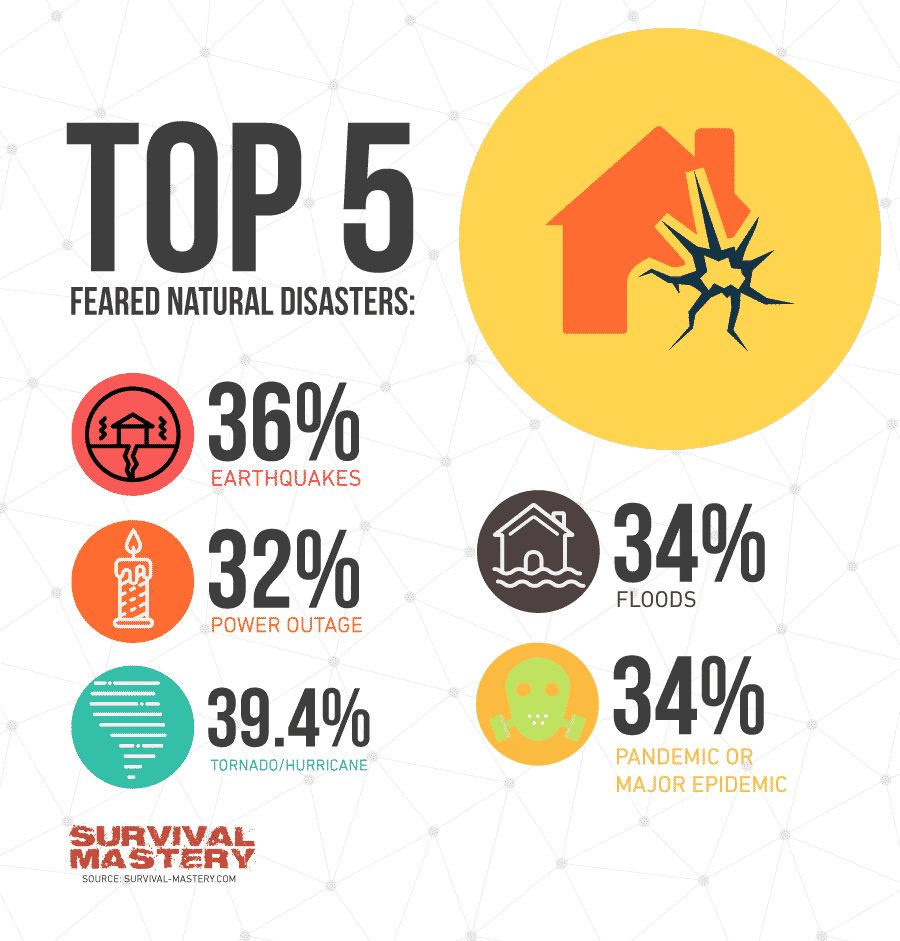
One of the advantages of modern life is that we can often predict when and where certain natural disasters will occur. Unfortunately, however, many still strike without warning each year.
Location-Specific Natural Disasters
- Volcanos – Eruptions threaten those who live on or around a volcano. They can also effect people living hundreds of miles away with debris and smoke in the atmosphere. As a matter of fact, it is speculated that the dinosaurs were wiped out by an asteroid that threw debris and smoke into the atmosphere.
- Hurricanes– These massive, destructive storms begin over the ocean and are associated with coastal communities. Unfortunately, these storms can travel inland undreds of miles causing mass destruction! Knowing how to prepare your home for a hurricane is important.
- Landslides – Landslides occur all over the country. They can be caused by deforestation, manmade construction, natural weather and erosion. In addition, they are fast and deadly.
Natural Disasters That Can Happen Almost Anywhere
- Earthquakes – There are certain areas in the world, located along fault lines, that are prone to earthquakes. Earthquakes can happen almost anywhere. If you live near an earthquake-prone area, you should know how to prepare for an earthquake.
- Tornadoes – Tornadoes occur when dry air meets air that is wet and heavy. They are, of course, more common in some areas, but they can happen almost anywhere if conditions are right. These storms are also sudden and deadly.
- Wild fires – These destructive fire consume thousands of acres annually. They can occur anywhere there is a lack of moisture and vegetation. With the right fuels, these fires can move much faster than you can run.
- Extreme heat – Extreme heat is an increasing issue all over the world. Being prepared for this harsh weather is important.
If you live in an area prone to these natural events, you must be prepared for the event itself.

Three Overall Steps to Survive
Surviving natural disasters can be broken down into three main steps:
- Planning – Start by creating a survival plan for the most likely disaster in your area. Then, include your family and loved ones in your emergency preparedness procedures.
- Emergency Kit – Assemble an emergency kit for every member of your family and keep it in an easily accessible place. This should include things like food, water, medicines etc.
- Secondary Disaster Preparedness – Consider secondary disasters, and prepare for those too. If a hurricane strikes, you will not have power. Climate will have a big impact – temperatures, water, heat, etc.
First, even an anticipated natural disaster can catch you off guard. Review your survival plan with your family several times a year. Ensure everyone knows where to go in an emergency and how to protect themselves once there.
Inventory your emergency kits at least twice each year. Ensure nothing is expired and that nobody has “borrowed” anything from your kits.
Make sure you prepare medical kits, food kits, or general DIY emergency kits.
Creating a Survival Plan
Much of creating a good survival plan is common sense, and that old saying that “The Devil is in the Detail” is true. So sit down and lay out your plan. Go through all anticipated scenarios from beginning to end, and then practice, practice, practice!
- Locate all possible escape routes. In order to prepare for a natural disaster, it’s important you know how to exit your house from every room. Think about which windows you can jump from without causing serious injury. When you’re trapped, most likely you won’t be able to use conventional escape routes.
- Locate all possible shelters near your home. After you get out of the house, you need to know where to go. Discuss where you’ll find shelter with your family, and agree on places to meet in case you are separated during the disaster.
- Designate a contact person. This person should be the one any of you can call in order to get news about other members of the family. They should live in another area that is unlikely to be affected by similar emergency situations.
- Practice, practice, and then practice some more! It’s important to know your natural disaster preparedness plan like the back of your hand. It will likely be different in theory than it is in practice. If you don’t go over a number of natural disaster situations each year, it could cost you your life.
- Try different approaches. You never know what situation a natural disaster will put you in. Imagine a variety of scenarios and practice accordingly. It’s important to be able to escape with your eyes closed (in case you need to leave in the dark, or in a fire where smoke obscures your vision).
- Draw a schematic of the evacuation plan. Place it in a highly visible spot.
- Don’t scare the younger members of your family. Children might not understand that this is just a drill. The idea of a natural disaster will definitely frighten them. Keep calm and explain that this is practice for an emergency. Explain this using stories or toys if they are really young. It’s always a good idea to ask for help from a professional on how to teach children about tornado safety or similar scenarios.
How to Implement Your Survival Plan
There is a big difference between documenting your survival plan and implementing the program when it is needed.
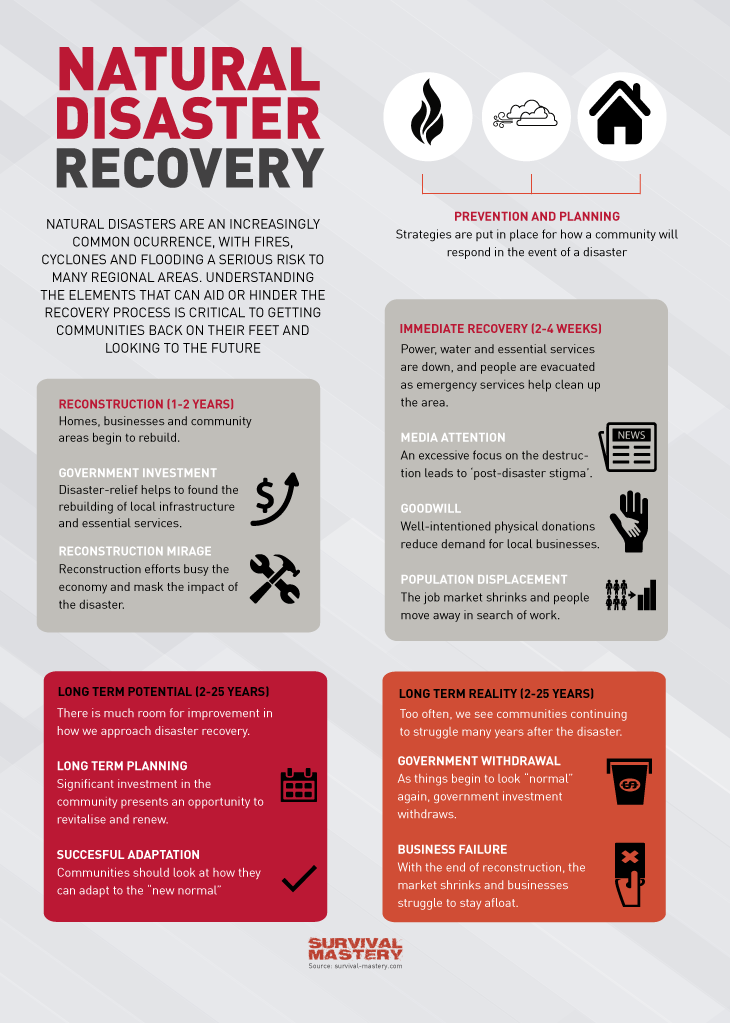
It is important to know what type of disaster is most likely to happen in your area. Some people live in disaster-prone areas, such as hurricanes or flood zones.
- Local Authorities – Check with local authorities to determine the main hazards you could face, and to understand evacuation routes and shelters.
- Separate Plans – Create separate plans for each type of disaster and highlight what they have in common.
- Alarm Systems – Install at least three alarm systems in the house. Outdoor alarms might not be enough, so make sure you get a text or phone warning as well. Local authorities use these systems to warn the population of impending natural disasters. Include a battery-powered AM/FM radio in your warning system kit.
- News – Keep your eye on the news in the event of a weather alert. Alerts will also be provided via radio.
- Emergency Kit – Put your emergency kit in a waterproof bag to protect your supplies in bad weather.
- Kit Items – Select all of the essentials for your emergency kit. The following items don’t include a full kit, but they are important.
- Non-perishable foods like energy bars and canned items
- Water
- Clothing – Wear layers so you can adjust body temperature according to your climate and temperatures.
- Footwear – always take a backup pair shoes
- Medication – if one of your family members needs special medication, prepare it to be put in the emergency kit. Keep in mind that a worst case scenario could last weeks, months or even years.
- First aid kit
- Shelters such as a tent, tarp and sleeping bags.
- Safety items including flashlights, batteries, pocket knife, multi-tool, etc.
- Firearm and ammunition in your emergency pack (if it’s legal in your area).
- Cash – In case of disasters, people tend to empty ATMs in the area.
Creating a good Bug Out Bag for each family member will be necessary. If your family members get separated, you want to ensure they are prepared and can survive until they reach your meet-up point.
Life After a Disaster
There’s a lot of information on how to survive an initial impact, but not much on the “after-disaster” stage. Once your adrenaline wears off, and you’re out of immediate danger, you’ll realize that the world you knew may have changed dramatically.
Every natural disaster survival plan must consider a worst-case scenario. When you’re returning to your home, know that you may experience property damage or the complete loss of everything you own. It’s essential to prepare your family members for this level of devastation from a natural disaster.
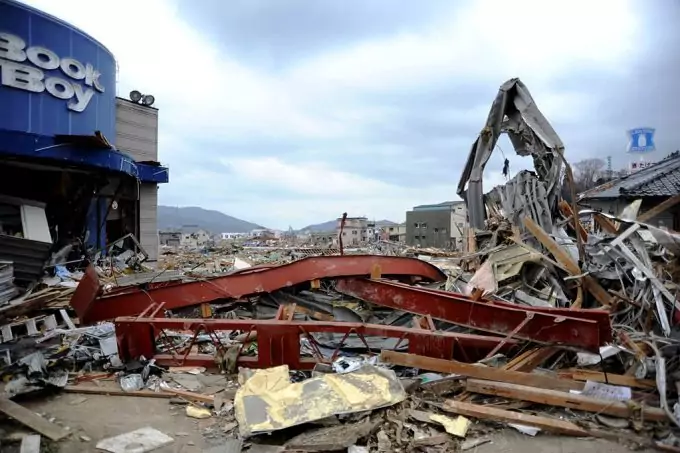
One of the safest ways to protect your assets and property is good insurance. This should be one of the first action items in your plan for surviving disasters. Then, if the worst happens and your house is destroyed, you can start to rebuild and recover your losses. Check with local authorities to find out the best way to ensure your personal property against natural disasters.
You should also have another safe place to live far away from where a disaster may occur. Ideally, it should be where desperate people are not trying to survive on the same limited resources.
Final Thoughts on Preparing for a Natural Disaster
Natural disasters will occur where you live, and even something as minor as losing power for several days can dramatically impact you and your family. So make sure you have the supplies you need, and remember…
Practice, Review, Practice, Review!



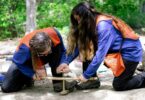
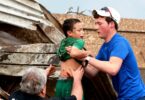

I consider that in present time article more than is actual. Really, there are natural disasters that are not covered by the geography. If to be honest, for the first time I hear about an extreme heat. In the theory very much everything very good, nice and correctly written. But, in most cases, when disaster strikes, people are frightened ans forget what to do. And most of people think that never such will happen to them, and not pay attention to such articles. Very informative and helpful. Thanks.
Well that’s why we have to train for such a situation :)
I always keep an emergency duffel bag for me and my family. This way, when an emergency strikes and we’re required to flee the area, we can just grab our bags and be on our way to safety. It’s also relieving to know that practice drills are being done in school so my biggest disaster preparation problem now is how to convince my kids into eating emergency foods because they find it too bland haha! In any case, I thank the contributors of this website for sharing what they know. Helps a whole lot :)
You do not have to do much convincing because the circumstances will drive your kids to like the emergency food.